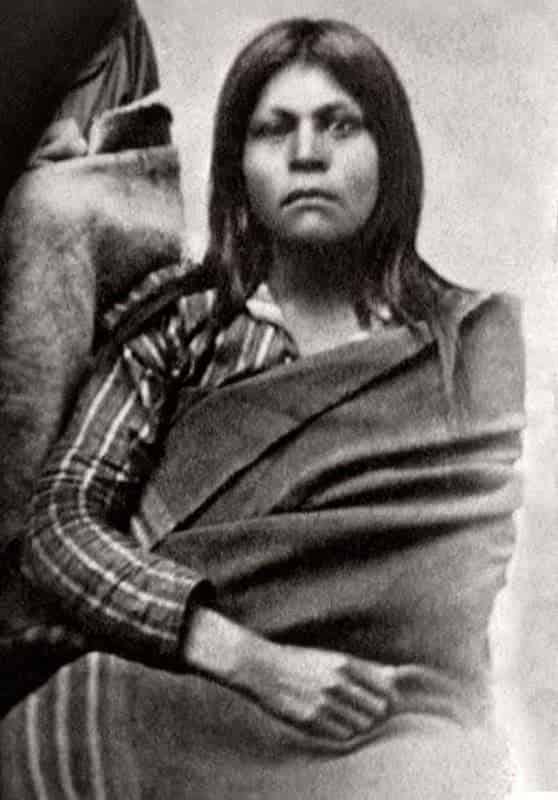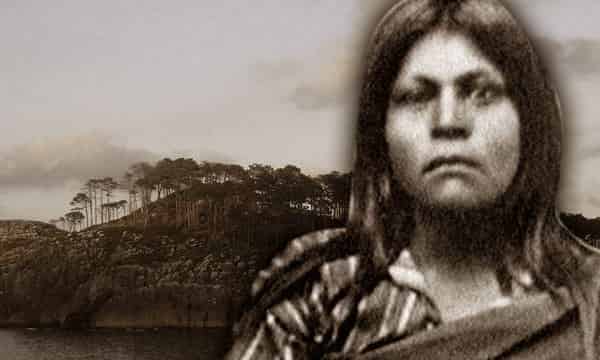Juana Maria: The Native American Who Lived Alone for 18 Years on San Nicolas Island

San Nicolas Island is one of the Channel Islands off the coast of California. These islands have been home to humans for thousands of years, with evidence of settlement dating back 13,000 years. Among the early inhabitants of San Nicolas Island was a Native American tribe known as the Nicoleño, a name given to them by Europeans.
For centuries, the Nicoleño lived quietly on their island, far from the influence of the outside world. Their isolation allowed them to maintain their way of life, undisturbed by outsiders. However, this peace came to an abrupt end in the early 1800s.
The Arrival of Russian and Aleut Hunters
In 1811, Russian fur traders and Aleut hunters arrived on San Nicolas Island. They were drawn by the island’s rich population of seals and sea otters, whose pelts were highly valued in the fur trade. These hunters, however, brought devastation. Not only did they kill large numbers of seals and sea otters, but they also committed brutal acts against the Nicoleño people. They massacred many of the tribe’s men and assaulted the women, leaving the community in ruins.
By the time the Spanish, who controlled California at the time, intervened in 1815, it was too late. While the Spanish arrested the Russian hunters to assert their authority over the islands, the damage had already been done. The sea otter population had been decimated, and the Nicoleño tribe was nearly wiped out.
The Decline of the Nicoleño Tribe
The once-thriving Nicoleño community dwindled rapidly. By 1830, only about 20 members of the tribe remained, though some accounts suggest there were as few as seven people left—six women and one elderly man. Recognizing that the tribe could no longer survive on the island, authorities decided to move the remaining Nicoleño to the mainland for their safety.
The Woman Left Behind
During the evacuation, one woman was accidentally left behind. Some say she was away from the main village, possibly gathering food or attending to other tasks, when the rescue party departed. As a result, she was stranded on San Nicolas Island, alone.
This woman, later known as Juana Maria, would remain isolated on the island for the next 18 years.
Survival on San Nicolas Island
Little is known about how Juana Maria managed to survive for so long in complete solitude. Without other people to rely on, she had to depend entirely on her skills, knowledge, and the resources available on the island. She likely hunted and gathered food, crafted tools, and found ways to shelter herself from the elements.
Archaeological evidence suggests that the Nicoleño were skilled in utilizing their environment. They fished, hunted sea mammals, and gathered shellfish, which may have sustained Juana Maria during her years alone. However, no detailed account exists of her experiences because no one could communicate with her when she was eventually found.
Her Discovery and Rescue
In 1853, 18 years after she was left behind, Juana Maria was discovered by a group of explorers. Stories of a “lone woman” living on San Nicolas Island had circulated for years, and eventually, a crew set out to find her. When they arrived, they were amazed to find her alive.
Juana Maria was dressed in clothing made of bird feathers and animal skins, a testament to her resourcefulness. She lived in a makeshift hut and had created tools and utensils from the materials available on the island. Despite her isolation, she appeared to be in good health.
Life on the Mainland
After her rescue, Juana Maria was taken to the mainland and brought to a mission in California. The missionaries named her Juana Maria and baptized her, but she could not communicate with anyone. She spoke a language that no one understood and often sang songs in her native tongue.
Because she had lived in complete isolation for nearly two decades, Juana Maria had no way of sharing her story. What she endured and how she survived remain a mystery to this day.
A Tragic Ending
Tragically, Juana Maria’s life on the mainland was short-lived. Just seven weeks after her rescue, she died from dysentery. It is believed that her immune system, unaccustomed to diseases common among the mainland population, could not fight off the illness.
Legacy of Juana Maria
Juana Maria’s story has fascinated historians, anthropologists, and writers for generations. Her tale of survival is a powerful reminder of human resilience and the hardships faced by Indigenous peoples during colonization.
Today, San Nicolas Island is largely uninhabited, used primarily by the U.S. Navy. However, Juana Maria’s memory lives on as a symbol of strength and endurance in the face of unimaginable challenges. Her life inspired Scott O’Dell’s famous novel, *Island of the Blue Dolphins*, which brought her story to readers around the world.
Though much about her life remains unknown, Juana Maria’s story continues to spark curiosity and admiration. Her ability to survive alone for 18 years is a testament to the resourcefulness and determination of the human spirit.
Frequently Asked Questions (FAQ) About Juana Maria
1. Who was Juana Maria?
Juana Maria was a Native American woman from the Nicoleño tribe who lived alone for 18 years on San Nicolas Island, one of California’s Channel Islands, after her tribe was nearly wiped out and the survivors were relocated to the mainland.
2. Why was Juana Maria left behind on the island?
During the evacuation of the remaining Nicoleño people to the mainland, Juana Maria was accidentally left behind. She was likely away from the main village at the time, possibly gathering food or tending to other tasks.
3. How long did Juana Maria live alone on the island?
Juana Maria lived alone on San Nicolas Island for 18 years, from approximately 1835 to 1853.
4. How did Juana Maria survive for 18 years?
She relied on her knowledge of the island’s resources. She hunted, fished, gathered shellfish, and crafted tools and clothing from animal skins and bird feathers. Archaeological evidence suggests she adapted traditional Nicoleño survival techniques to her solitary life.
5. How was Juana Maria discovered?
Juana Maria was found in 1853 by an expedition sent to search for her after hearing stories of a “lone woman” on San Nicolas Island. When discovered, she was living in a small hut and appeared to be healthy despite her isolation.
6. Could Juana Maria communicate with her rescuers?
No, Juana Maria spoke a language that was unknown to her rescuers. Her tribe’s language was already nearly extinct, and no one on the mainland could understand her. She often sang in her native language, but its meaning was never deciphered.
7. What happened to Juana Maria after she was rescued?
She was brought to the mainland and stayed at a mission in California, where she was baptized and given the name Juana Maria. Unfortunately, she died from dysentery just seven weeks after her arrival.
8. What caused Juana Maria’s death?
Juana Maria died of dysentery, likely because her immune system was not accustomed to diseases prevalent among the mainland population.
9. Is Juana Maria the inspiration for Island of the Blue Dolphins?
Yes, Juana Maria’s story inspired Scott O’Dell’s novel *Island of the Blue Dolphins*, which is a fictionalized account of her life and survival on San Nicolas Island.
10. What happened to the Nicoleño tribe?
The Nicoleño tribe was nearly wiped out due to massacres by Russian and Aleut hunters, disease, and the disruption of their way of life. By the time of their relocation to the mainland, only a handful of Nicoleño people remained.
11. Where is San Nicolas Island today?
San Nicolas Island is part of the Channel Islands off the coast of Southern California. It is now managed by the U.S. Navy and is not open to the public.
12. Why is Juana Maria’s story important?
Juana Maria’s story highlights the resilience of Indigenous peoples and the tragic consequences of colonization and exploitation. Her survival for 18 years in isolation is a remarkable testament to human strength and resourcefulness.
13. Are there any remains or artifacts from Juana Maria’s time on the island?
Archaeologists have found artifacts that could be linked to Juana Maria, such as tools, structures, and items she might have crafted. These discoveries help provide insight into how she may have survived on the island.
14. How is Juana Maria remembered today?
Juana Maria is remembered through historical accounts, archaeological research, and literary works like *Island of the Blue Dolphins*. Her story is also a part of California’s history and serves as a symbol of endurance against great odds.
15. Can people visit San Nicolas Island?
No, San Nicolas Island is not open to the public because it is controlled by the U.S. Navy and used for military purposes. However, other Channel Islands in the region are accessible and open for tourism.


